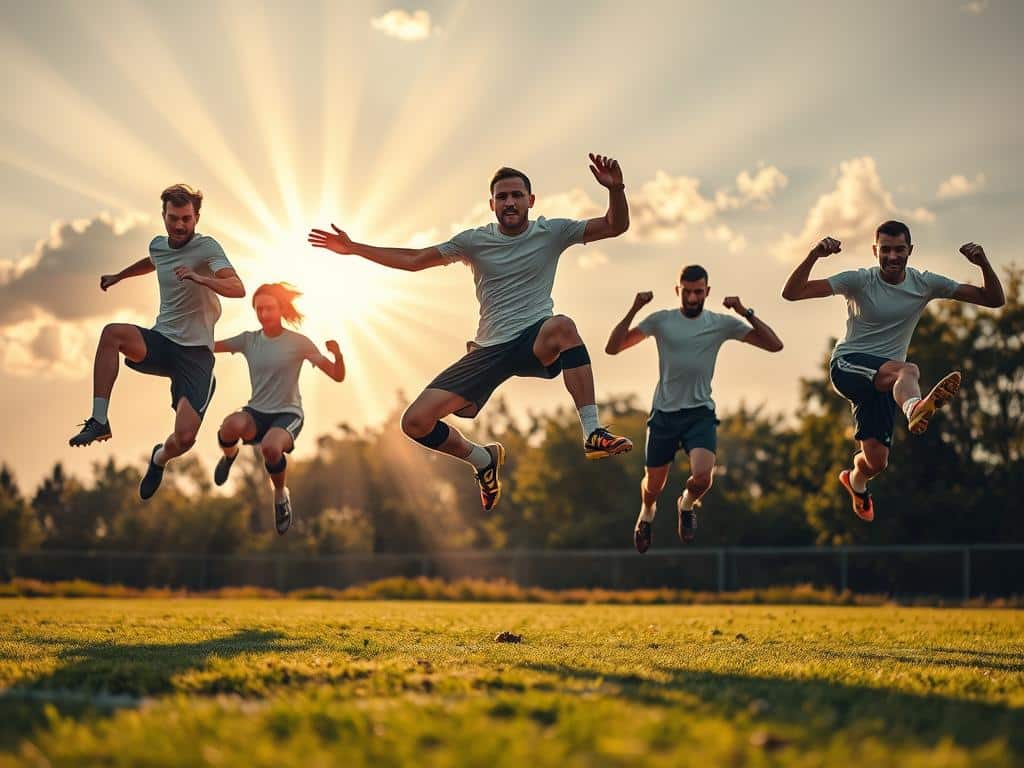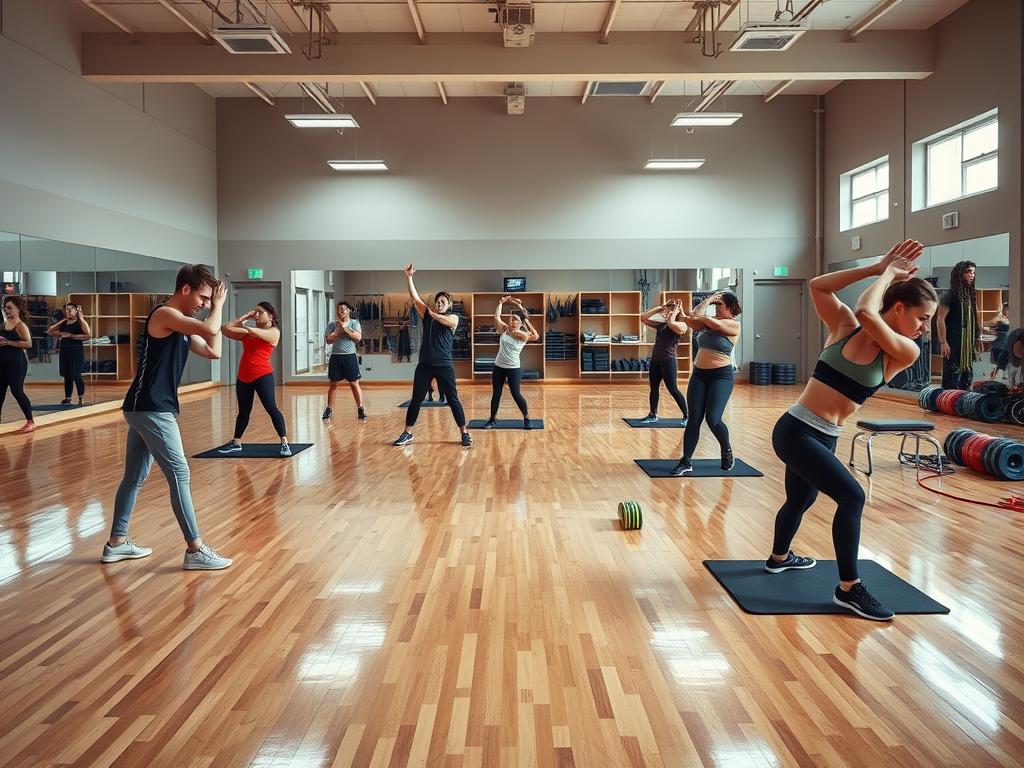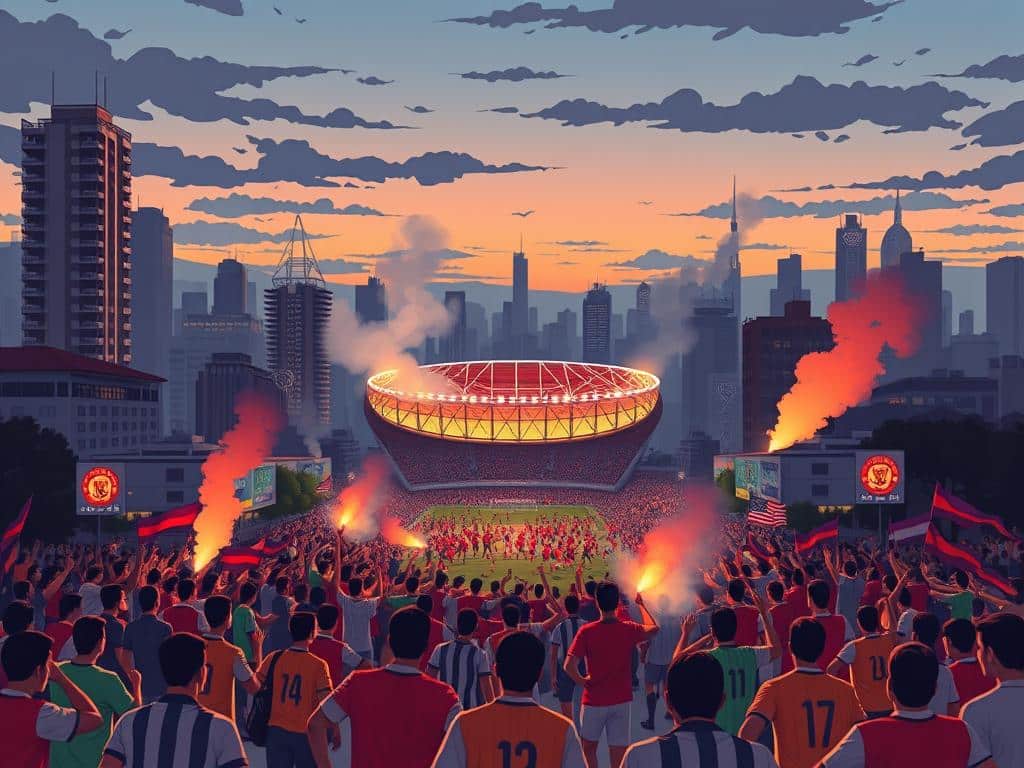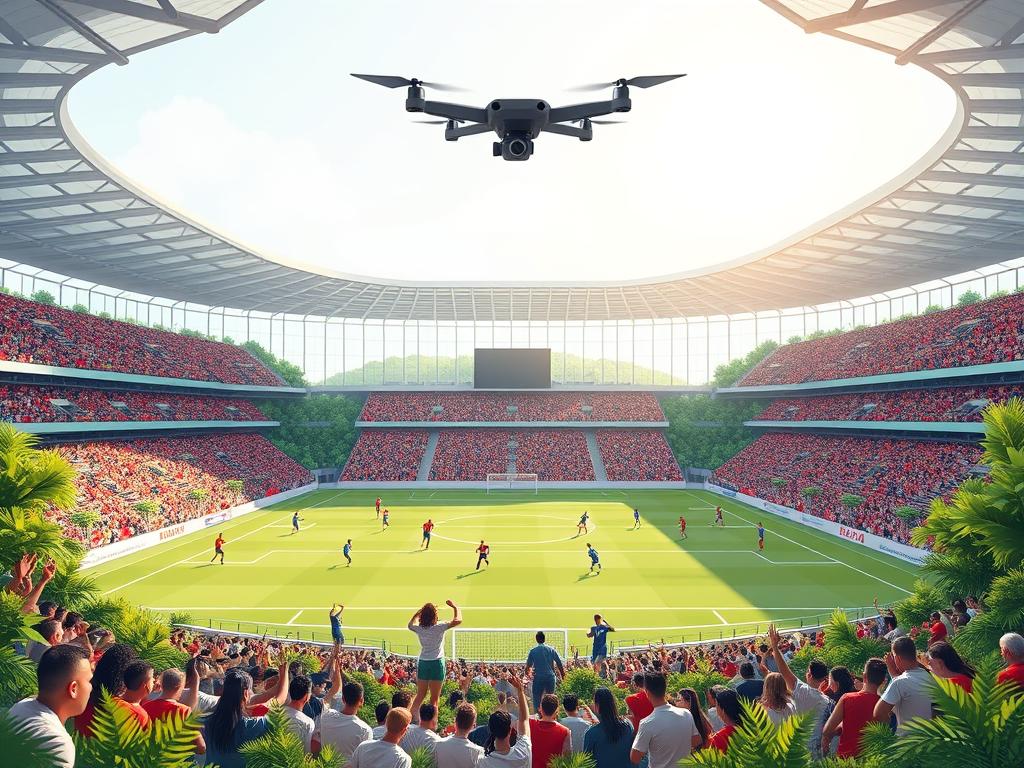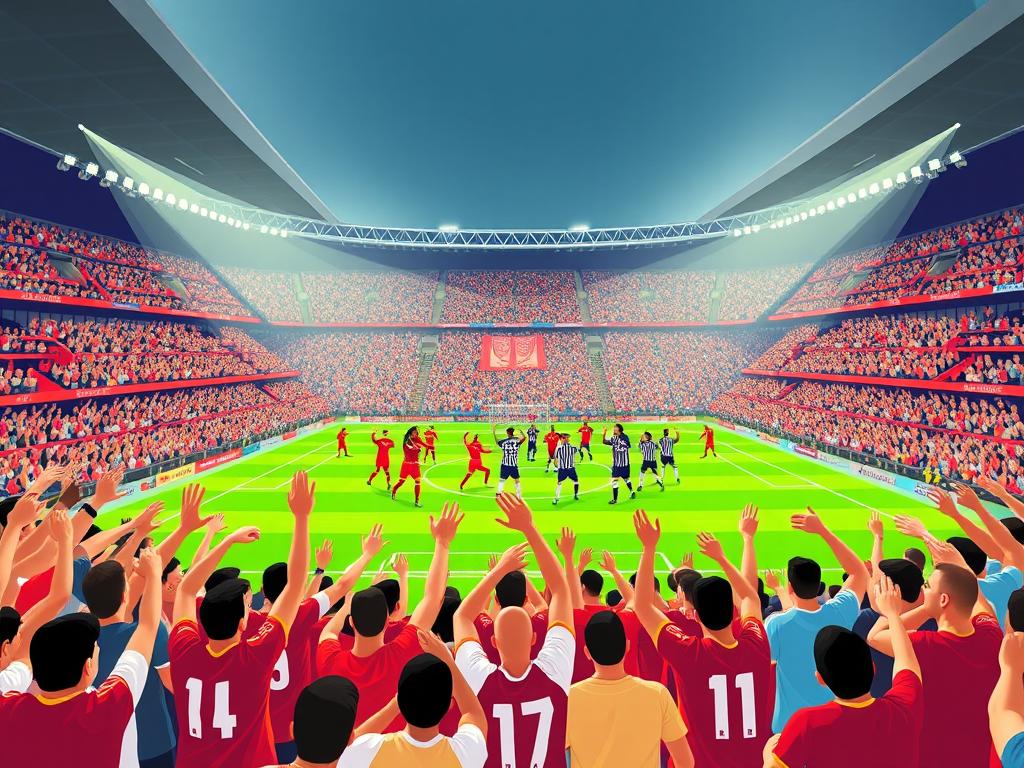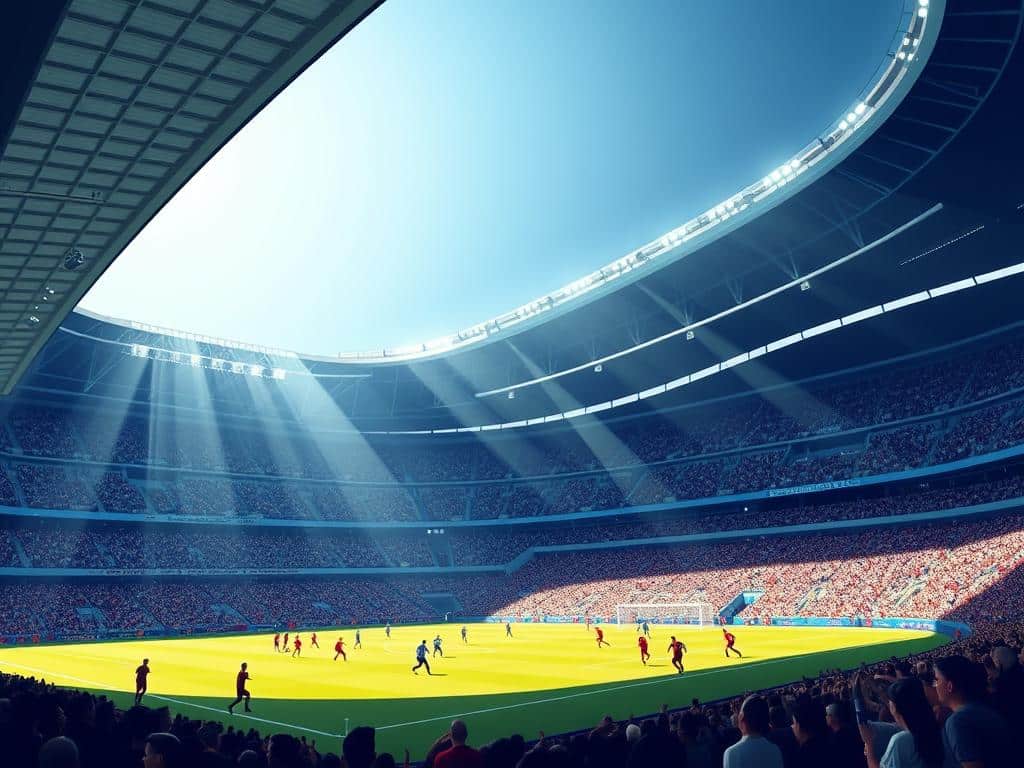Nearly 60% of your body is water, and players can lose 1–3 liters per match. Even a 2% drop in body mass from fluid loss can blunt endurance, crisp skill work, and decision-making.
Soccer is a nonstop sport with high intensity and sudden sprints. That constant work pushes core temperature up. When you don’t replace fluid, fatigue and cramps arrive sooner.
Simple checks help. Aim for pale yellow urine to track hydration status daily. Pre-match, drink 500–700 mL a few hours before, then 200–300 mL close to kickoff. During the game, small sips every 15–20 minutes help keep performance steady.
Postgame recovery matters too. Replace roughly 1.5 L per kilogram lost, and include electrolytes and some carbs. Female soccer players and youth need tailored plans, since one-size-fits-all rarely works.
Key Takeaways
- Small fluid deficits harm athletic performance; even 2% loss is noticeable.
- Track daily status with urine color and planned fluid intake.
- Follow simple pre-, during-, and postgame drinking targets for best results.
- Use electrolyte and carb drinks to speed recovery after play.
- Customize plans for female soccer athletes and younger players.
The importance of hydration in soccer
Field play alternates long runs with explosive moves that push the body’s systems hard. That mix makes fluid balance a game-time factor you can’t ignore.
How water supports temperature regulation, muscle function, and cognition
Water cools you — sweat evaporates as you run and sprint, taking heat away. In high heat and humidity this cooling is reduced, so intake must rise.
Fluids move oxygen and nutrients to working muscles and lubricate joints. That supports quick cuts, strong strikes, and sustained speed late in matches.
Why small fluid deficits create big performance declines
Slight dehydration blunts concentration and slows reaction time. Even a ~2% drop in body mass from fluid loss can reduce endurance and technical precision.
- Typical players lose 1–3 liters per match; losses grow in hot conditions.
- Start topped up and maintain during play to protect athletic performance.
- Personalize plans: sweating rate and salt loss vary by player.
| Challenge | What water does | Practical tip |
|---|---|---|
| Heat and sweating | Evaporative cooling and thermoregulation | Increase fluid intake in hot conditions |
| Muscle fatigue | Delivers oxygen and fuels energy systems | Drink small amounts regularly during exercise |
| Cognitive decline | Maintains blood volume and brain perfusion | Preload fluids before kick-off and sip at breaks |
| Salt loss | Electrolytes replace sodium lost in sweat | Check gear for white salt marks; add sodium if needed |
What dehydration does to performance, decision-making, and injury risk
Even small fluid loss can turn sharp play into slow, risky moves. When players drop just a few percent of body weight from sweat, speed and fine touch fall first. Mental focus fades too. That makes split-second choices worse and errors more likely late in halves.
Speed, endurance, and technical skills under fluid loss
Dehydration cuts sprint power and blunts endurance. Your first touch slips and long-range shots lose accuracy. That drop in performance is physiological, not just tiredness.
Heart rate, cardiovascular strain, and perceived exertion
Hypohydration lowers stroke volume, so heart rate climbs for the same running effort. Perceived exertion rises. Players feel heavier and pace falls—fatigue arrives sooner and injury risk rises as technique breaks down.
- Expect 0.5–3.0 L lost per hour in hot, high-intensity play.
- Loss of fluids and sodium raises cramp and heat illness risk.
- Small, planned intake across both halves keeps function steadier.
| Impact | Mechanism | Signs | Quick fix |
|---|---|---|---|
| Speed & power | Lower blood volume reduces muscle perfusion | Slower sprints, weak first touch | Sip electrolyte drink at breaks |
| Cognitive decline | Reduced brain perfusion and attention | Poor decisions, late reactions | Preload fluids 2–3 hours before match |
| Cardio strain | Lower stroke volume raises heart rate | High perceived exertion, early fatigue | Schedule regular intake every 15–20 minutes |
| Muscle cramps | Electrolyte and water loss | Stiffness, painful spasms | Replace sodium post-play; monitor sweat marks |
Want to cut injury risk and keep form late in games? Use weigh-ins, labeled bottles, and a simple plan. For more on preventing and treating match problems, see prevent and treat soccer injuries.
Understanding fluid loss in games and training
Sweat rates swing wildly from player to player and session to session. Typical soccer players lose 0.5–3.0 L per hour, which can add up to 1–3 liters or more across a match.
Heat, humidity, and heavy gear raise sweating and raise fluid needs fast. Environmental conditions matter. Watch heart rate—if it climbs at the same pace, you likely need more fluid.
What varies and what to track
- Individual sweat sodium ranges from ~200–2,000 mg per liter—some players show salt marks on kits.
- Weigh before and after training: 1 kg lost ≈ 1 liter lost.
- Longer hours of training in warm conditions demand planned sips, not a single halftime gulp.
| Factor | Typical range | Practical tip |
|---|---|---|
| Sweat rate | 0.5–3.0 L/hour | Weigh to estimate per session |
| Match total | 1–3 L per match | Start topped up and sip often |
| Sweat sodium | 200–2,000 mg/L | Match drink sodium to your loss |
Track patterns across sessions. When running outputs drop late, fluid loss may be the cause. Small checks protect players and keep performance sharp.
Assessing hydration status: from urine color to USG
Simple morning checks give a clear window into daily fluid trends for players. Want a quick, reliable step? Use urine as your first screen!
Urine color is the fastest tool. Aim for pale straw yellow. Darker shades mean boost your water and consider electrolytes.
Urine specific gravity cutoffs and practical testing cadence
For precision, measure urine specific gravity (USG). Values below 1.020 usually signal euhydration. Above that, plan extra fluid before heavy sessions.
Collect a morning, mid-flow sample before food or drink for consistent readings. Spot-check USG on heavy training days and MD-2 to avoid starting key sessions behind.
Why thirst is unreliable and how to self-monitor daily
Don’t trust thirst alone—by the time you feel it, you’re already behind. Daily self-monitoring beats guesswork for players who train hard or in heat.
- Use urine color charts in locker rooms for fast feedback.
- Pair periodic USG testing with weigh-in/out to track fluid balance.
- Teach players what levels and trends mean—one reading isn’t enough.
| Check | Practical cutoff | When to test | Action |
|---|---|---|---|
| Urine color | Pale straw yellow | Daily, morning | Maintain water intake; add electrolytes if dark |
| USG | <1.020 euhydration | MD-2, heavy days, spot checks | Increase planned fluid before play |
| Weigh-in/out | Loss >1% body mass | Before/after sessions | Replace at ~1.5 L per kg lost across recovery |
| Thirst | N/A | Continuous | Use as late cue only; don’t rely on it |
Evidence from elite players: what a national team study reveals
A national-team study shows how simple coaching can flip a squad’s pre-game fluid habits overnight. Baseline tests found mean urine specific gravity at 1.025±0.005, with 87% of players arriving dehydrated. That’s a lot to fix!

Coaching mattered. A 60-minute lecture on timing, amounts, and assessment plus individual USG feedback improved hydration status across three camps. By match day only 6% were dehydrated; MD-2 still showed 52%—teams often try to fix things late.
What this means for squads
- Real-world proof: clear numbers and regular feedback change behavior.
- There was no link between hydration status and GPS training load, wellness scores, or body fat—so you can’t guess levels from those tools.
- Sweat loss in football can reach 0.5–3.0 L/hour, so plan intake early and often.
| Metric | Baseline | MD-2 | Match Day |
|---|---|---|---|
| USG (mean) | 1.025 ±0.005 | — | <1.020 in most players |
| % dehydrated | 87% | 52% | 6% |
| Practical action | Education + testing | Recheck & reminders | Top-off planned intake |
Pre-hydration: how to start matches fully hydrated
Start smart: the hours before kickoff set your body’s ability to perform. Plan fluid intake early so you arrive ready to move and think sharply.
Timing and amounts: two to three hours out and final top-off
Start 2–3 hours before the match with 500–700 mL of water or a sports drink. That amount helps restore blood volume and supports steady game function.
About 20–30 minutes before kickoff, take a final top-off of 200–300 mL. Small, timed sips beat last-minute gulps.
Hydrating foods, carbohydrates, and electrolytes before kickoff
Use food to boost fluids and carbs. Fruit like watermelon, pineapple, or orange adds water plus quick fuel for exercise.
Pair carbohydrates with electrolytes when heat or heavy sweat is likely. Sodium helps keep fluid in the body and slows rapid loss.
- Watch your sweat signs—white salt marks mean you may need higher-sodium pregame drinks.
- Keep intake steady the day before; don’t rely on a big final gulp to fix earlier loss.
- Test what sits well on your stomach during training so match-day plans feel natural.
| When | Amount | Why it helps |
|---|---|---|
| 2–3 hours pre-game | 500–700 mL | Restores blood volume and primes cognition |
| 20–30 minutes pre-game | 200–300 mL | Top-off without sloshing; preserves touch |
| Food choice | Fruit/veg + light carbs | Adds fluid, carbs, and a gentle energy boost |
Players who nail pre-hydration feel sharper late in games. For tips on finishing recovery right, see optimize post-game recovery.
Hydrating during play: halftime and stoppage strategies
Planned sipping across halves protects sharp feet and quick thinking. Make every break count. Aim for 150–350 mL every 15–20 minutes, scaled to match intensity and heat.
On hot days, lean to the top end and use sports drinks with sodium. That salt helps hold fluids and supports muscle firing. Too much plain water can dilute blood sodium and raise hyponatremia risk.
How much to drink and when
- Think in intervals: use stoppages and halftime to hit 150–350 mL per 15–20 minutes.
- Choose bottles by role: midfielders and pressing forwards often need more frequent sips.
- Mix water and sports drinks so you get fluids and sodium without overdoing either.
Preventing overhydration on hot days
Watch sweat and jersey weight as live cues. Cramps often mean low sodium, not just low water. Coaches: stage bottles at natural stops so players don’t miss sips. Train the routine so it’s automatic on game day.
| Situation | Drink choice | Quick action |
|---|---|---|
| Mild heat, low work | Water + small sports drink | 150 mL every 20 min |
| High heat or heavy sweat | Electrolyte sports drink | 250–350 mL every 15–20 min |
| Long match or extra time | Higher sodium sports drink | Increase sodium and sip often |
Post-match rehydration and recovery
Postgame refueling is a tactical move: plan it like a substitution. Start within the first hour to repair the body and speed recovery. Quick action reduces next-day fatigue and helps players train again at full tilt.
How much to drink and what to choose
Weigh-in and weigh-out is your guide. For every kilogram lost, aim for about 1.5 L back—roughly 24 oz per pound lost. That target restores fluid balance faster than guessing.
Combine water with carbohydrate-electrolyte drinks to top off glycogen and replace sodium. Chocolate milk is a handy option: it gives carbs, protein, fats, and fluid in one tasty package.
- Start sipping within 60 minutes post-match and continue over the next few hours.
- If urine stays dark later that day, increase water and sodium intake.
- In hot games or with high loss, choose higher-sodium recovery drinks to hold fluids.
| Step | What to take | Why it helps |
|---|---|---|
| Immediate (0–60 min) | Carb-electrolyte drink or chocolate milk | Quick glycogen start and sodium to retain fluid |
| 1–4 hours post | Small, frequent sips of water + snack | Finish rehydration and aid muscle repair |
| Overnight | Monitor urine; drink more if dark | Ensure recovery for next training |
Choosing the right sports drink: carbohydrates and electrolytes
Picking the right sports drink can change how you feel and perform on match day. Which bottle you grab should match the job you need: quick fluid, steady fuel, or full glycogen rebuild.
Isotonic, hypotonic, hypertonic—when each fits
Isotonic drinks match blood concentration. They suit most matches and steady work.
Hypotonic options have lower carbs and electrolytes. Use them when you mainly need rapid fluid uptake.
Hypertonic drinks or gels pack extra carbs and electrolytes. Reserve these for long efforts or postgame recovery to speed glycogen refill.
Sodium targets and customizing to sweat salt loss
Aim for ~6–8% carbohydrates in a sports drink to support performance without slowing gastric emptying. For sodium, a baseline target is about 200 mg per 16 oz (≥150 mg per 12 oz).
- Match the drink to the role: midfielders may need more carbs and sodium; substitutes less.
- If your sweat leaves white streaks, you likely lose more salt—bump sodium up.
- Alternate with water so total intake sits well on your body and stomach.
| Type | When to use | Key feature |
|---|---|---|
| Isotonic | Most matches | 6–8% carbs + moderate electrolytes |
| Hypotonic | Quick rehydration | Lower carbs, faster fluid uptake |
| Hypertonic | Endurance/recovery | Higher carbs for glycogen replenishment |
Test drinks during training. Players who match choice to sweat rate and salt loss see better performance and recovery on game day!
Hydration strategies for different players and contexts
Not every player sweats the same; your plan should match your role and age. Female soccer athletes and youth need tweaks that pros often do not. Small changes make big gains on match day!
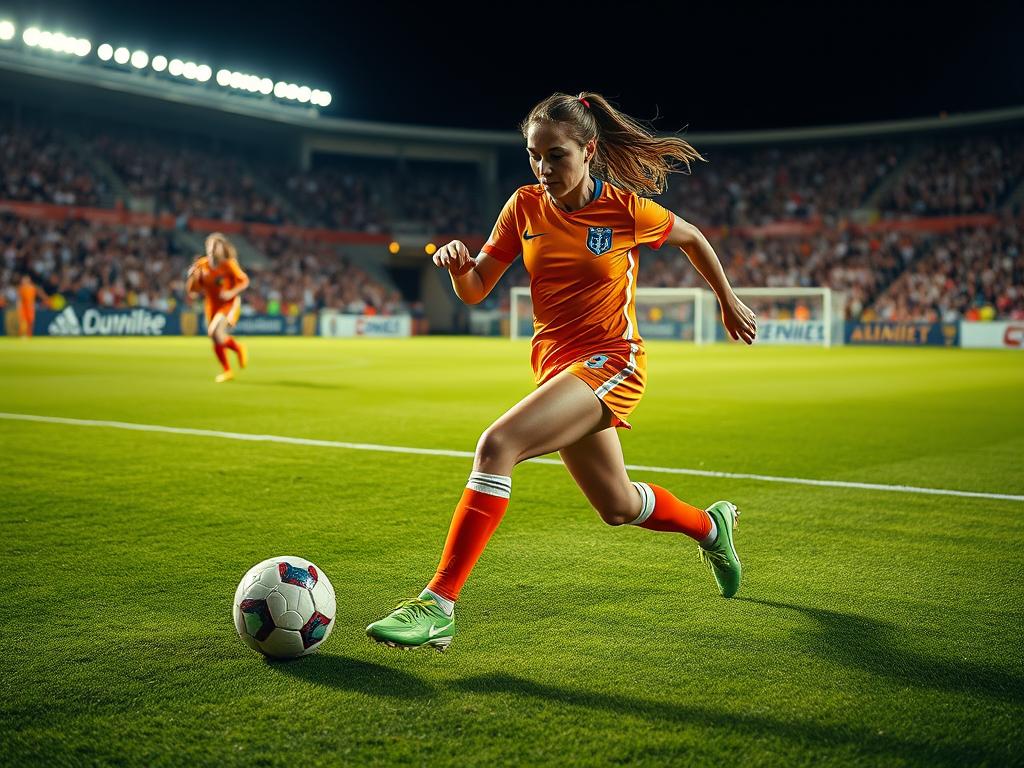
Female players and youth vs. adults
Female soccer players benefit from individualized schedules. Consider cycle phase, GI comfort, and iron status when choosing drinks and timing.
Kids dehydrate faster. Children hit dehydration around 1% body loss; adults can often tolerate closer to 2%. Puberty raises sweat output, so U17 players may need more than youth routines.
Hot, humid, and high-load environments
When environmental conditions are tough, increase sip frequency and volume. In heat and high load, use drinks with moderate sodium so the fluid you take stays in the body.
- Schedule hydration windows during tournaments and heavy weeks.
- Favor sodium-containing options over coconut water for sweat replacement.
- Teach young players to take timed sips every 20 minutes to build habit.
| Group | Key tweak | Quick action |
|---|---|---|
| Female soccer | Match fluids to cycle and iron status | Test drinks in training |
| Youth | Smaller body → faster loss | Timed sips every 20 min |
| Adults | Higher tolerance to 2% loss | Scale volumes to sweat rate |
| Heat/high load | More frequent sodium fluids | Increase sip frequency and kit cooling |
Football environments vary. Adapt your hydration like you adapt tactics. Do it right and players stay sharp, late and loud!
Training load, wellness, and hydration: what’s connected—and what’s not
Numbers from trackers don’t always tell the whole story about player fluid levels. In an elite national team, urine specific gravity (USG) showed no link with GPS-derived training load, sleep or soreness scores, or body fat percent. That was surprising but clear.
Why USG didn’t correlate with GPS load or wellness markers
Feeling good after practice doesn’t prove your hydration status. Players can log heavy distance and still show concentrated urine two days before a match (MD-2).
MD-2 readings were worse than match day, which highlights a prep gap. Teams often fix fluid late, not early.
- Quick take: don’t infer fluid levels from distance, sprints, or soreness.
- Use objective checks—USG or bedside urine color—so players and staff act early.
| Measure | Correlation with USG | Practical action |
|---|---|---|
| GPS load (distance, sprints) | None | Test USG routinely; don’t assume based on load |
| Wellness scores (sleep, soreness) | None | Combine subjective scores with objective checks |
| Body fat % | None | Individualize plans regardless of body composition |
| MD-2 vs Match Day | MD-2 worse | Shift more fluid earlier on MD-2 to improve readiness |
Takeaway: treat hydration as its own pillar. Plan fluid actions by time and testing, not just by exercise load. Do that and performance at game time will be more reliable.
Practical field tools to manage fluid balance
Simple field tools turn good intentions into consistent drinking habits on match day. Make the procedures easy and visible so players act without thinking.
Weigh-in/weigh-out and labeled bottles
Weigh players before and after sessions to estimate liters lost. Use that number to set a clear post-match target: about 1.5 L per kg lost.
Label bottles with player names and volume goals. Show how much to drink across halves and at halftime so there’s no guesswork.
Motivational bottles, urine charts, and sideline logistics
Place urine color charts in locker rooms for fast checks. A quick glance gives players instant feedback on their levels.
Use motivational bottles with time marks to nudge steady sips during travel, school, or warm-ups. Stage fluids at stoppage points and both benches to cut missed opportunities.
- Assign staff to track bottle returns and give quick reminders—logistics drive consistency.
- Flag red signs: dark urine, headaches, or frequent cramps trigger a sodium and fluid review.
- Share weekly feedback; players respond when they see better USG and stronger late-game energy.
| Tool | Use | Quick win |
|---|---|---|
| Weigh-in/out | Estimate session losses | Set 1.5 L per kg replacement |
| Labeled bottles | Individual targets | Clear intake across halves |
| Urine chart | Visual daily check | Fast levels feedback |
Common hydration mistakes to avoid
Many players wait until kickoff to fix fluid gaps—and that gamble often fails. Elite data shows a clear risk: 52% of players were dehydrated two days before a match (MD-2) while only 6% were dehydrated on match day. That means late fixes happen too often.
Don’t rely on thirst. By the time you feel thirsty, fluid loss has already hurt endurance and decision-making. Build timed sips into your day instead.
Key mistakes and quick fixes
- Starting MD-2 hypohydrated: set simple goals two days out, not just the night before.
- Skipping electrolytes: low sodium invites cramps and poor fluid retention—use sports drinks when sweat loss is high.
- Overusing low-sodium flavored waters: too much plain fluid can dilute blood sodium and raise hyponatremia risk in long, hot matches.
- Neglecting post-game rehydration: replace ~1.5 L per kg lost to recover for the next session.
- Trusting guesswork: measure with weigh-in/out and urine color to course-correct.
| Mistake | Impact | Quick action |
|---|---|---|
| MD-2 complacency | Higher dehydration rates | Schedule fluids earlier in the week |
| Rely on thirst | Late correction, poorer performance | Timed sips every 20 minutes |
| No electrolytes | Cramps and fluid loss | Include sodium in hot or long games |
Simple rule: the right drink, right amount, right time—repeat. Treat hydration strategies like set plays and watch the impact on performance!
Game-day hydration blueprint: quick-reference plans
A clear, minute-by-minute fluid plan removes guesswork and keeps players sharp from kickoff to final whistle.
Follow these simple targets and you’ll know exactly what to drink and when. Pick the line that matches the age and role on your roster.
- Adults — before: about 24 oz of electrolyte-infused water roughly two hours pre-match, then a small top-off 20–30 minutes before kickoff.
- Adults — during: sip 6–12 oz every 20 minutes. Use sports drinks when play exceeds 45 minutes or it’s very hot.
- Adults — after: aim for 16–24 oz per pound lost (≈1.0–1.5 L per kg) and start within an hour for faster recovery.
- Teens: 11–16 oz every 20 minutes; puberty raises sweat, so scale up vs. kids.
- Kids: 3–8 oz every 20 minutes; keep sips small, frequent, and fun.
| Group | During (per 20 min) | When to add electrolytes |
|---|---|---|
| Adults | 6–12 oz | >45 minutes or hot |
| Teens | 11–16 oz | >60 minutes or heavy sweat |
| Kids | 3–8 oz | long play / doubleheaders |
Practical cues: use labeled, pre-filled bottles and check urine color pre- and post-game to validate intake. On hot days, increase frequency and add sodium so fluids stay put. With a clear blueprint, players arrive ready, stay sharp, and finish strong!
Make hydration a winning habit: turn strategies into consistent performance
Build a loop—measure, act, check—and consistency will outplay last-minute fixes every time! Train the routine and players get steadier legs and sharper thinking late in matches. One bottle. One weigh-in. One quick urine check.
Use simple tools that proved their worth in elite camps: labeled bottles, urine color charts, and weigh-in/out. These practical steps turn hydration into habit and keep fluid balance steady across training and match activity.
Coaches: make targets clear by minute and by position. When hydration strategies are routine, team performance improves, cramps drop, and decisions stay sharper. Commit today—consistency is the real edge for football players and teams.


